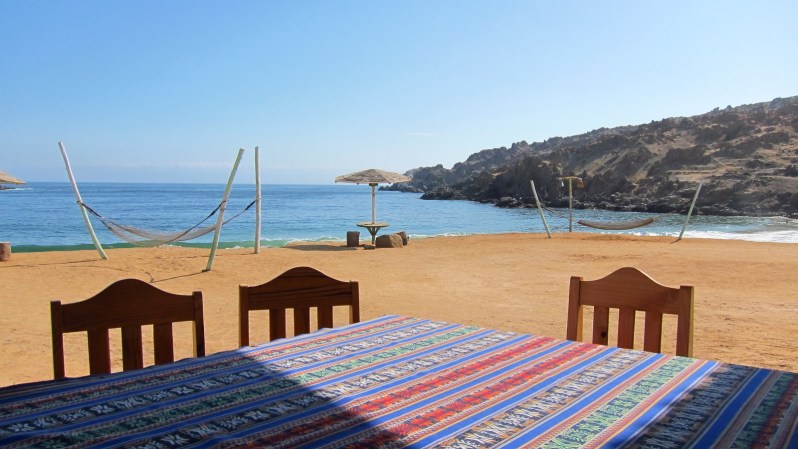
There’re certain rewards for the intrepid traveler who ventures down paths not regularly featured by professional tour companies—like coming home with some badass pics and experiences that’ll make for some good round-the-dinner-table fodder. One such place is Puerto Inca—a quiet, beachside ruin of the principal port of the Inca empire. It’s located along the Peruvian coast about three hours south of the Nazca Lines on the way to Arequipa/Puno/ Bolivia which sounds kinda far, but by Peruvian standards, that’s like sharing backyards.
After spending a year traveling the entire country, this place stood out for its ability to be rustic, understated and, ok, completely magical. Basically, a cool spot to spend a day and night with your girl and to take a break from the gringo trail (that route most tourists tend to stick to when traveling around South America)—without really having to leave it.
To be sure, the ruins here aren’t Machu Picchu. And unless you’ve got a big thing for Inca history, they’re really just a nice place to go watch watch the sun set. The real reasons to stop here lie on either side of the weathered Inca structure.
Rooms are pretty quaint and come with bedding, towels and soap. That’s about it. That said, Inka’s lack of unfettered amenities is wholly made up by their wifi, cold beer (Crusquena is the best) and the un-obfuscated sound of crashing waves carried into each room by the cool ocean breeze. In other words—you’re roughing it…but not really.
The real reason to come here is to go beyond the ruins. Literally. A 10 minute walk above the structures, south along the coast, leads to the kind of breathtaking sight that’s easily worth the price of the bus ticket you took to get here and maybe even the plane ticket you bought to go to Peru in the first place. Actually, you could be on Mars, except with the Pacific coast line cutting a 100 foot cliff into the picture. Paths switchback through 1-4 story sized outcroppings of dusty red rocks and their valleys as far as the eye can see, giving hints to planet Earth only in the fact that crows like to hang here, spread their wings and sun. If you’re feeling brave, this can be completely done on your own, but also, you can rent horses (when available) and/or a guide back at the hotel. And if your’e feeling intrepid (I was) a climb down the precarious set rocks to the water will pay off in gratifyingly painterly ways.
It’s a hot place, no doubt, so pack some water before you walk past those ruins. But also, you can turn due west, walk less than 5 minutes towards the horizon and you’ll realize that you’re standing on a series of about 100 foot cliffs that peak into the solitude of a undulating coast line of ensconced coves, void of human life. Now, it becomes your planet. It’s possible, though dangerous alone, to climb down (carefully!) to the water, and swim in natural pools of crystal clear water.
Time to go: Go during Peruvian summer—December – April or be kinda, sorta cold.


